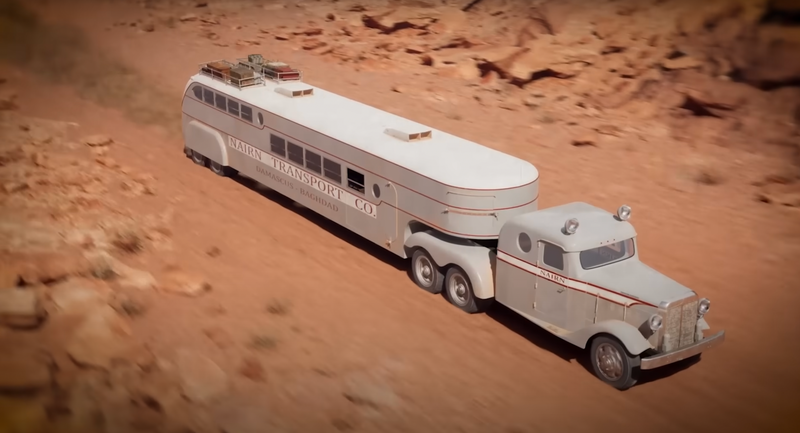This Luxurious, Wilderness-Crossing Bus Was Once The Largest In The World

One of our favorite guys on YouTube, Calum, tackled the incredible story of the Nairn brothers this week and their overnight bus through the Syrian desert, which combines adventure, exploration, and incredible engineering.
It all begins with two brothers from New Zealand — Norman and Gerald Narin — who served in the Middle East during World War I. Prior to the war, the brothers were already fairly wrenchy, running a motorcycle shop in their native town of Blenheim. When the war ended, the brothers stuck around the Middle East, eventually ending up in Beirut. The two actually sold and repaired cars in the city before creating one of the regions first motorized transport routes. That first route was short-lived, but the brothers applied what they learned to a new goal: Finding a way to cross the Syrian desert in order to get passengers and cargo from French-held Damascus to British Baghdad more efficiently.
The British Consulate in Beirut hired the brothers to make this dangerous, uncharted journey based on their reputation as mechanics alone. Without access to a nearby seaport, people and goods leaving Baghdad for Europe had to take a weeks-long circuitous ocean route. Airmail and passenger planes were rare, unpredictable and expensive back then. Should the overland route prove successful, the brothers would be able to cut down travel time from Baghdad back to England to just 10 days instead of over a month. With the protection of one of the region’s most powerful Sheiks (who was also interested in the route in order to keep his gold smuggling business alive), the brothers picked their way through the Syrian desert over the course of four days in a Buick, an Oldsmobile and a Lancia.
The route proved so successful that they began to run it regularly, cutting travel time down to 24 hours. In just a few years, they purchased a giant, 28-ton, all-wheel drive Marmon-Herrington tractor bus to move people and cargo more efficiently through the wilderness. At 80 feet long, the 188-horsepower diesel Marmon could carry 40 passengers with both first and second-class compartments. The bus was known for its comforts and convenience, with toilets and a buffet serving ice-cold water on board, plus four days of food in case of disaster. The cab always contained at least two drivers and a sleeping compartment so that the bus could run through the desert day and night at an average speed of 65 miles per hour—an absolutely blistering pace in those days.
But best of all, the Marmon could carry up to 2.7 tons of luggage and cargo, absolutely blowing air fares of the time out of the water. Each passenger was granted 65 pounds of luggage for free with the purchase of a ticket. The giant bus, once the largest in the world, would go on to play a part in World War II, and its later descendants would become the first such vehicles fitted with air conditioning. The entire story of this incredible bus is worth your time!

 Yahoo Autos
Yahoo Autos 